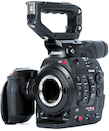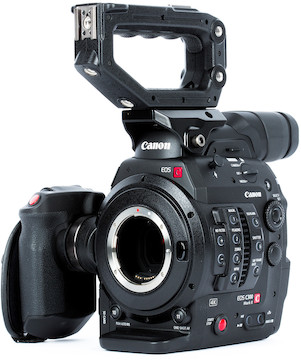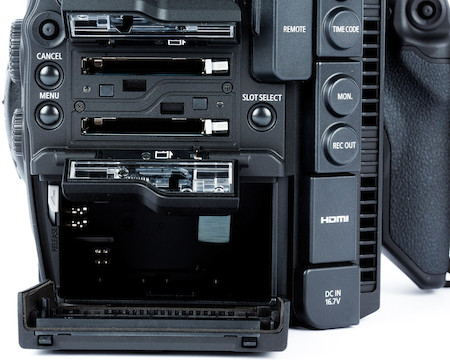Canon EOS C300 Mark II Dual Pixel (EF)
Includes
- Canon C100/300/500 Grip Block
- Non-Polarized Cable
- Canon Mic Mount
- Polarized Cable
- Canon C300 Mark II Dual Pixel (EF)
- Canon BP-A30 Battery
- Canon CA-A10 AC Adapter
- Canon C300 II Monitor Unit
- Canon UN-5 Unit Cable
- Canon UN-5 Unit Cable
- Canon C300 II Top Handle
- Canon C300 II Top Handle Bracket
- Canon CG A20 Charger
- Canon CA-CP200B Compact Power Adapter
- Canon C Series Hardware Kit
- Hardware - Canon XF/XA Mic Mount Screws
Resources
Canon EOS C300 Mark II Dual Pixel (EF)
| Overall | Cosmetic | Performance | Hours Logged | Price | |
|---|---|---|---|---|---|
| Good *Details Below | 700-900 | $1,061.00 | |||
| Fair *Details Below | 500-700 | $898.00 |
- Description
- Monitor is not included, but any HDMI or SDI monitor should work
The Canon C300 Mark II Dual Pixel (EF) is a professional-grade 4K cinema camera. Key C300 Mark II features include:
8.85MP 4K DCI Super 35 CMOS sensor
Internal 4:2:2 10-bit in 4K and up to 4:4:4 12-bit in 2K
Record MXF to two cfast cards and proxies to SD
Capture up to 120p in 2K or full HD plus RAW out
Battery door cover may not be included with the sale.
Other purchase options:
Separately available accessories that may interest you:
- Canon Battery Charger for C300 Mark II and C200/B Batteries
- Canon BP-A30 Battery
- Canon Grip Assembly for Canon C100/300/500
- Canon MA-400 Microphone Adapter
- Canon Monitor Unit for C300 Mark II
- Wooden Gimbal Grip Relocator for Canon EOS C100/300/500
- Canon C300 Mark II Top Handle
- Wooden Camera Handgrip Extension Cable for Canon C-Series
Ally's Take
Video Tech
Originally thought to be Canon’s answer to the Sony FS7, the C300 Mark II really fits better somewhere between the FS7 and RED. The C300 Mark II’s color space reacts to artificial light better than...
Specifications
| Brand | Canon |
| Camcorder Type | Cinema |
| Camera Type | Camcorder |
| Imaging | Sensor
|
| Inputs/Outputs | Audio Inputs
|
| Item Type | Camera |
| Monitoring | Viewfinder
|
| Mount | Canon EF |


























